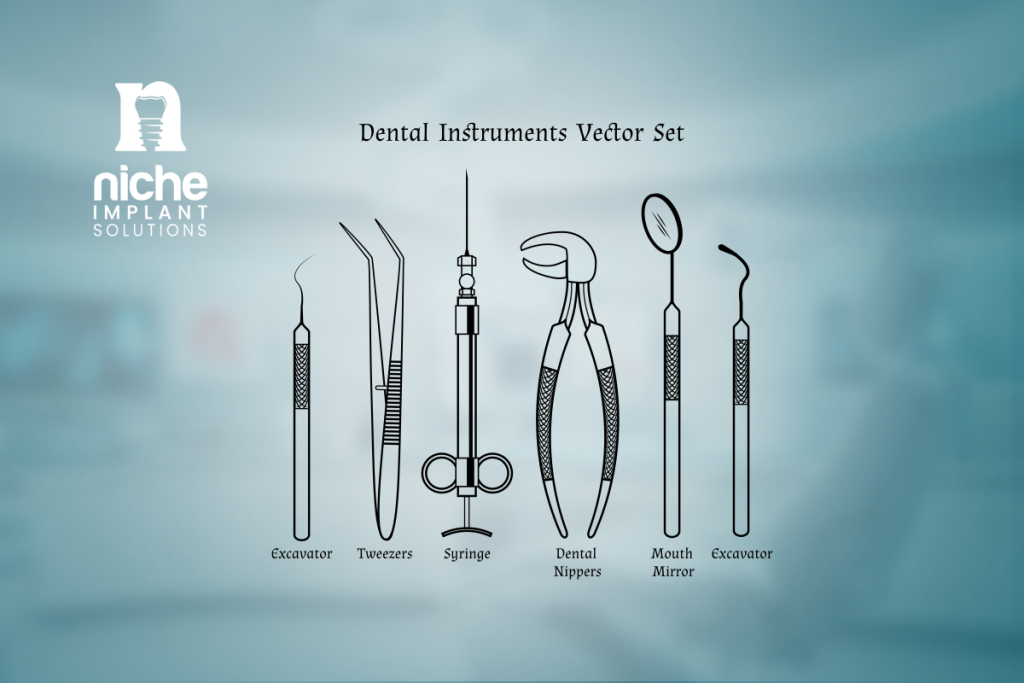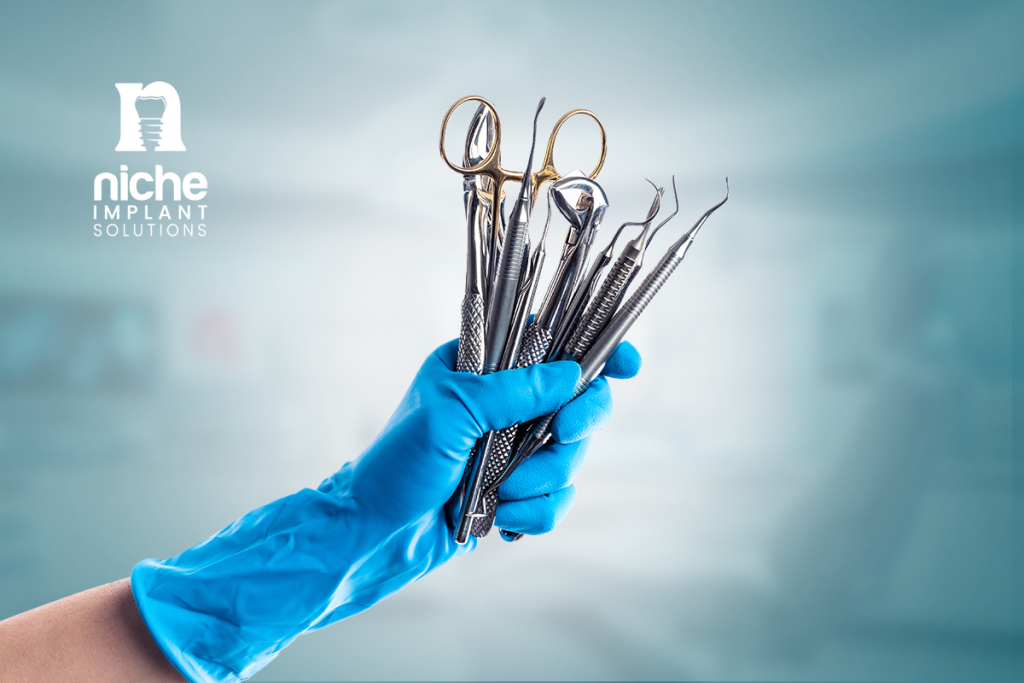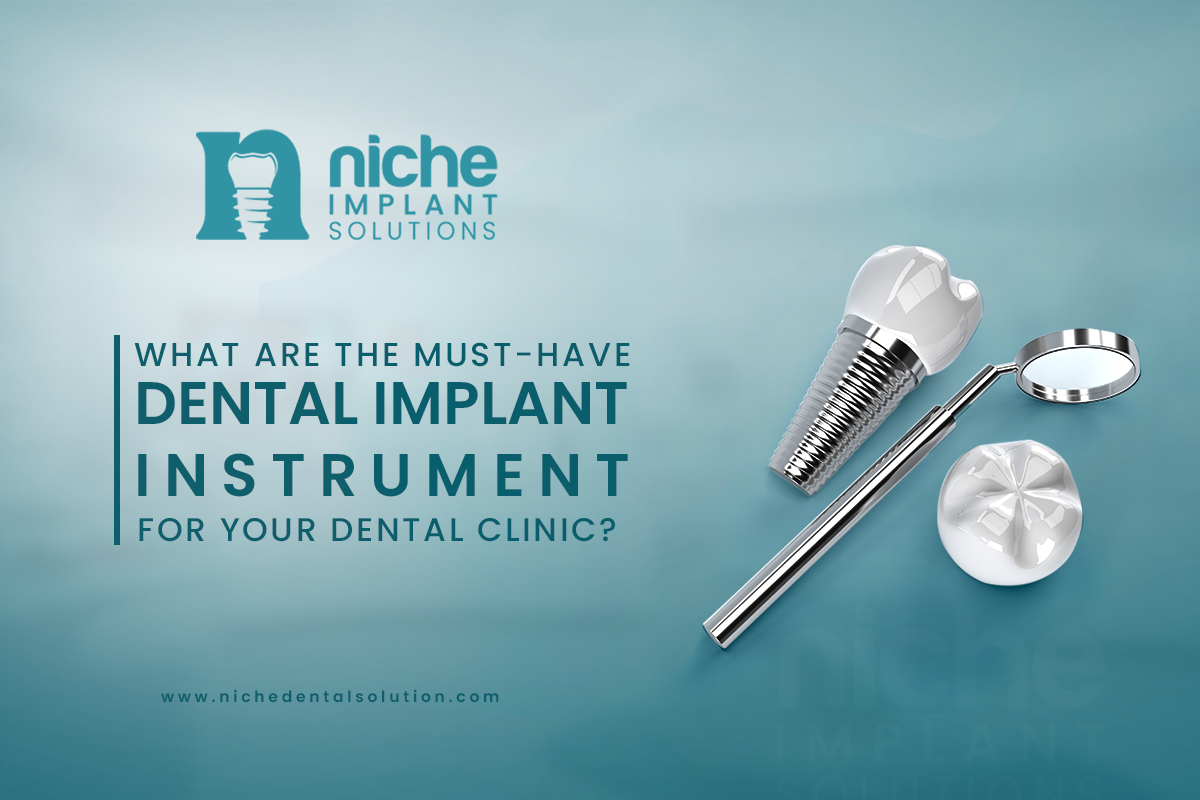In the world of modern dentistry, dental implants have become a staple treatment option for patients seeking durable and natural-looking solutions for tooth replacement. As dental professionals strive to provide high-quality implant services, having the right set of instruments is essential for ensuring precise and successful implant procedures. From implant drills to prosthetic components, each instrument plays a crucial role in the implantation process, requiring careful consideration and investment.
In this article, we will explore the must-have dental implant instrument that every dental clinic should have in their arsenal. Whether you’re a seasoned implantologist or a dental practitioner looking to expand your implant services, understanding the essential instruments and their functionalities is paramount to delivering excellent patient care and achieving optimal treatment outcomes. Join us as we delve into the key instruments needed for successful implant procedures and discuss their importance in modern implant dentistry.
Types of Dental Implant Instrument
Dental implant Instrument are essential tools used by dentists during the preparation of the implant site. These handpieces are designed to provide precision and control while drilling into the bone to create the space necessary for implant placement. There are several types of dental implant instrument, each with its own unique features and advantages. Below, we explore some of the most common types:
Straight Handpieces
Straight handpieces are the most basic type of dental implant instrument. They feature a straight, cylindrical design and are typically used for initial osteotomy (bone drilling) procedures. Straight handpieces offer excellent visibility and access to the surgical site, making them ideal for straightforward implant placements.
Contra-angle Handpieces
Contra-angle handpieces are dental implant instrument and angled handpieces that allow for better access to hard-to-reach areas of the mouth, such as the posterior regions. These handpieces feature a head that is angled relative to the shaft, which enables dentists to drill at an angle without obstructing the patient’s view or access to the surgical site. Contra-angle handpieces are commonly used for more complex implant placements and in cases where space is limited.
Low-Speed Handpieces
Low-speed handpieces are designed for precise and controlled drilling at lower speeds. They are commonly used for tasks such as pilot hole preparation, osteotomy, and bone shaping during dental implant surgery. Low-speed handpieces offer reduced heat generation and vibration, which helps minimize trauma to the surrounding bone and tissues.
High-Speed Handpieces
High-speed handpieces are dental implant instrument and used for rapid drilling and cutting during dental procedures. While not typically used for implant site preparation, they may be employed for tasks such as crown preparation or the removal of excess bone or tissue. High-speed handpieces are characterized by their high rotational speeds and are often equipped with water irrigation to cool the drill and prevent overheating.
Implant-specific Handpieces
Some dental implant systems come with specialized handpieces designed specifically for use with that particular implant system. These handpieces may feature custom-designed drills and drivers that are optimized for the specific dimensions and characteristics of the implants. Implant-specific handpieces ensure compatibility and optimal performance during implant placement procedures.
Each type of dental implant instrument has its own advantages and applications, and the choice of handpiece depends on factors such as the complexity of the procedure, the location of the implant site, and the dentist’s preference and experience. By utilizing the appropriate handpiece for each stage of the implantation process, dental professionals can achieve precise and successful outcomes for their patients.
Key Components of Dental Implant Instrument
Dental implant instrument are comprehensive sets of instruments and accessories designed to facilitate the placement of dental implants. These kits contain a variety of components that are essential for each stage of the implantation process, from site preparation to implant placement and beyond. Below are the key components commonly found in dental implant kits:
- Drills
Dental implant kits typically include a range of drills of various sizes and designs. These drills are used to prepare the implant site by creating precise osteotomies (holes) in the jawbone to accommodate the dental implant fixture.
- Drivers
Implant drivers are used to insert the dental implant fixture into the prepared osteotomy site. These drivers come in different configurations, such as manual handpieces or motorized drivers, and are designed to provide the necessary torque for implant insertion.

- Wrenches
Implant wrenches are used to secure the dental implant fixture in place by tightening the abutment screw. These wrenches may feature different types of torque indicators or ratcheting mechanisms to ensure proper tightening and prevent over-torquing.
- Implant Impression Components
Dental implant instrument may include impression copings, transfer copings, and impression trays specifically designed for capturing accurate impressions of the implant fixture and surrounding tissues. These components are essential for fabricating the final restoration (crown, bridge, or denture).
- Surgical Guides
Some dental implant instrument may include surgical guides or templates that help guide the precise placement of the implant fixture during surgery. These guides are often fabricated based on pre-operative digital or analog impressions and provide a means of ensuring optimal implant positioning.
- Bone Grafting Materials
In cases where bone augmentation or grafting is necessary to augment the bone volume, dental implant kits may include bone grafting materials such as bone graft substitutes, membranes, and osteoconductive scaffolds.
- Surgical Instruments
Dental implant instrument may contain a variety of surgical instruments, including elevators, curettes, retractors, and tissue punches, which are used to facilitate the surgical procedure and ensure optimal access and visibility.
- Sterilization Trays
To maintain sterility and organization, dental implant kits often come with sterilization trays or cassettes designed to hold and protect the instruments during autoclaving and storage.
- Implant System Components
Finally, dental implant kits may contain components specific to the implant system being used, such as implant fixtures, healing abutments, impression copings, and prosthetic components.
These key components work together to streamline the dental implant procedure and ensure predictable and successful outcomes for both the dental practitioner and the patient. By having access to a comprehensive dental implant kit, dental professionals can perform implant surgeries efficiently and with confidence, ultimately leading to enhanced patient satisfaction and long-term implant success.
Computer-Aided Design/Computer-Aided Manufacturing (CAD/CAM) Tools in Implant Dentistry
Computer-Aided Design/Computer-Aided Manufacturing (CAD/CAM) technology has revolutionized various aspects of dentistry, including the fabrication of custom implant abutments, surgical guides, and prosthetic restorations. Here’s how CAD/CAM technology is utilized in these areas and the advantages it offers in implant dentistry:
Custom Implant Abutments
CAD/CAM technology allows for the precise design and fabrication of custom implant abutments tailored to the specific needs of each patient. After obtaining digital impressions of the implant site, the dentist or dental technician uses specialized software to design the abutment digitally.
The software enables adjustments in dimensions, angulation, and emergence profile to optimize the fit, function, and esthetics of the final restoration. Once the design is finalized, the data is sent to a milling machine, which fabricates the abutment from a solid block of material, such as titanium or zirconia. The result is a highly accurate and customized abutment that ensures proper alignment with the implant fixture and surrounding dentition.
Also Read: Best Dental Implant Brands for Aesthetics & Functionality : Your Guide to a Natural Smile
Surgical Guides
CAD/CAM technology plays a crucial role in the fabrication of surgical guides for precise implant placement. Using digital imaging techniques, such as cone beam computed tomography (CBCT), the dentist captures detailed 3D images of the patient’s oral anatomy. These images are then imported into CAD software, where virtual implant planning takes place.
The dentist can accurately position virtual implants within the digital model, taking into account anatomical landmarks and prosthetic considerations. Based on this virtual plan, a surgical guide is designed to guide the implant drills with precision during surgery.
The surgical guide is fabricated using 3D printing technology, ensuring accurate transfer of the virtual plan to the surgical field. By utilizing surgical guides, dentists can achieve optimal implant placement while minimizing surgical trauma and reducing the risk of complications.
Prosthetic Restorations
CAD/CAM technology streamlines the fabrication process of prosthetic restorations, such as crowns, bridges, and dentures, supported by dental implants. After obtaining digital impressions of the implant site and surrounding dentition, the dentist or dental technician designs the restoration using CAD software.
The software allows for precise customization of the restoration’s shape, size, and contour to achieve optimal esthetics and function. Once the design is finalized, the data is transferred to a milling machine or 3D printer, which fabricates the restoration from a variety of materials, including ceramics, resins, and metals. The result is a precisely fitting and aesthetically pleasing restoration that seamlessly integrates with the patient’s natural dentition and implant-supported prostheses.
Advantages of CAD/CAM in Implant Dentistry:
- Enhanced Precision: CAD/CAM technology enables meticulous planning and execution of implant procedures, leading to precise implant placement, abutment design, and prosthetic restoration.
- Improved Efficiency: Digital workflows streamline the entire treatment process, from diagnosis and treatment planning to fabrication and delivery of the final restoration, reducing chair time and enhancing patient satisfaction.
- Customization: CAD/CAM technology allows for highly customized implant solutions tailored to each patient’s unique anatomy and treatment goals, resulting in superior esthetics and function.
- Predictability: By utilizing virtual planning and surgical guides, dentists can anticipate and mitigate potential challenges, leading to more predictable treatment outcomes and reduced risk of complications.
- Patient Comfort: CAD/CAM technology minimizes the invasiveness of implant procedures, resulting in faster healing times, reduced postoperative discomfort, and improved patient experiences.
CAD/CAM technology offers numerous advantages in implant dentistry by facilitating precise planning, customization, and execution of implant procedures, ultimately leading to improved clinical outcomes and patient satisfaction.

Niche Company Unveils Competitive Pricing for State-of-the-Art Dental Implant Instrument: Empowering Precision at Affordable Rates
In the ever-evolving landscape of dental implantology, precision and innovation are paramount. Addressing the needs of dental professionals worldwide, a niche company has emerged, offering cutting-edge dental implant instruments at competitive prices. With a focus on empowering practitioners with state-of-the-art tools while keeping affordability in mind, this company is set to revolutionize the industry.
With the global demand for dental implants steadily increasing, access to high-quality dental implant instrument is crucial for practitioners seeking to deliver exceptional patient care. However, the cost of acquiring these tools has often been a barrier for many dental professionals, particularly those in smaller practices or resource-limited settings.
Recognizing this challenge, the niche company has made it their mission to provide top-tier dental implant instrument at prices that align with the realities of modern dentistry. By leveraging innovative manufacturing techniques and strategic partnerships, they have been able to streamline production processes and minimize overhead costs without compromising on quality.
One of the company’s flagship offerings is its range of implant drills, meticulously designed to deliver unparalleled precision and performance. These drills feature advanced cutting geometries and surface treatments, ensuring optimal osseointegration and long-term implant stability. Despite their state-of-the-art design, these drills are priced competitively, making them accessible to a wide range of practitioners.
By partnering with Niche Dental, you gain access to the best possible Dental implant instrument, exceptional service, and a company committed to the continuous advancement of dentistry in Egypt, all while supporting a company dedicated to social responsibility.
Contact Niche Dental Now : Experience the Difference
Call us on +201011687002
Location
Cairo٫Zahraa Elmaady٫ Carrefour St٫ 10058





0 Comments